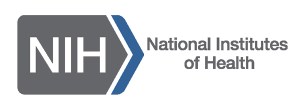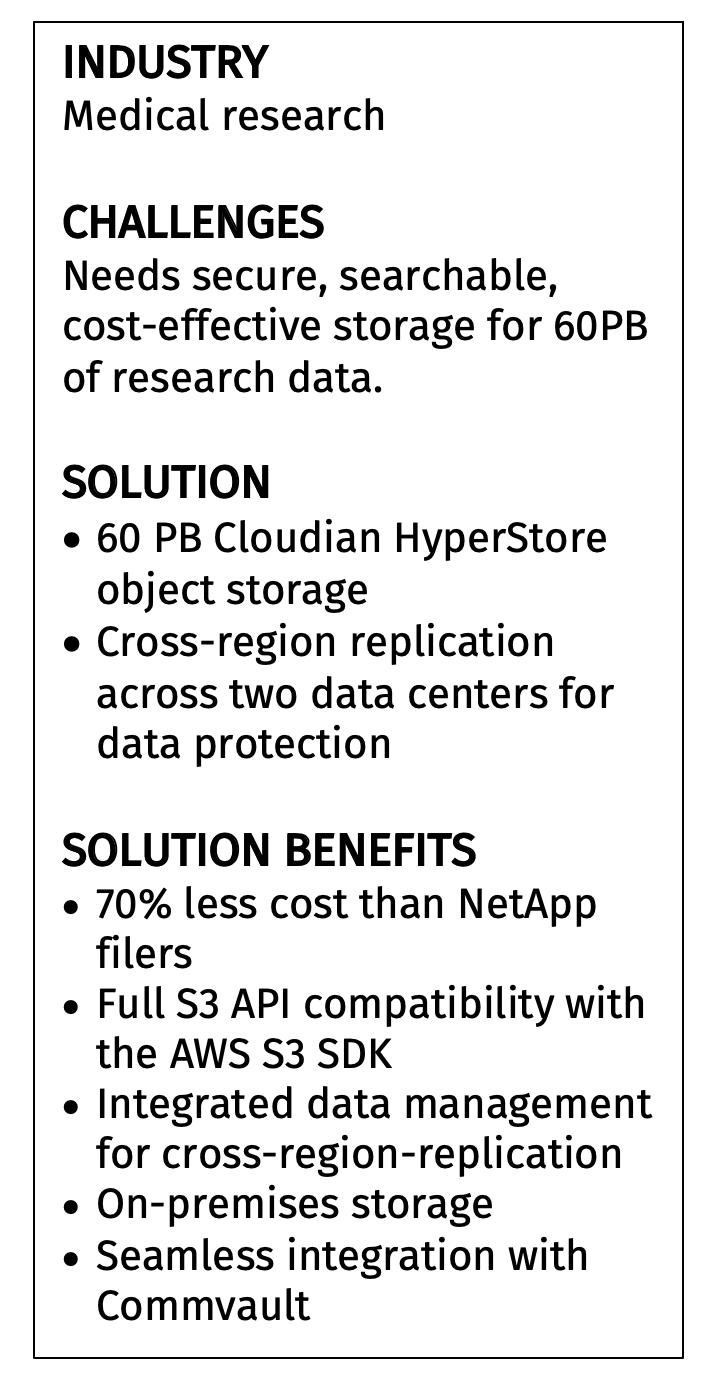 A 60-petabyte Cloudian installation at the NIH demonstrates Cloudian’s scalability, versatility, and cost savings. Here is the case study for this large-scale healthcare deployment.
A 60-petabyte Cloudian installation at the NIH demonstrates Cloudian’s scalability, versatility, and cost savings. Here is the case study for this large-scale healthcare deployment.
Data drives the nation’s medical research
The National Institutes of Health (NIH), a part of the U.S. Department of Health and Human Services, is the nation’s medical research agency — making important discoveries that improve health and save lives. The organization is made up of 27 different components called Institutes and Centers. Each has its own specific research agenda, often focusing on diseases or body systems. The research produces an immense amount of medical data that needs to be stored securely, yet made searchable and sharable across the research community.
Storage cost challenges demanded change
 In 2018, when Cloudian first engaged with NIH, the organization had 60PB of data on a NetApp filer environment. The NetApp devices were employed as both primary and backup storage, with Commvault providing the data protection management software.
In 2018, when Cloudian first engaged with NIH, the organization had 60PB of data on a NetApp filer environment. The NetApp devices were employed as both primary and backup storage, with Commvault providing the data protection management software.
The storage environment was proving to be costly, so a program was initiated to find an alternative, lower-cost solution. The IT managers at NIH had heard about S3-compatible object storage and believed the technology had the potential to help. A pilot program was launched for what would be a small deployment of S3-compatible storage, on-premises.
After evaluating their options, they selected Cloudian HyperStore for the pilot. The initial 1.5PB system included Cloudian HyperStore appliances, Cloudian 24×7 support, and Cloudian professional services to assist with the installation.
Cloudian healthcare case study: 70% savings vs. NetApp filers
The initial deployment gave the NIH team an opportunity to evaluate Cloudian as a backup target. What they quickly found was that Cloudian was easy to use and saved them significant costs when compared with the existing NetApp systems. Their projections indicated that over 5 years, factoring in support costs and expansion costs, Cloudian would be 70% less costly than NetApp.
Expanding the role and the savings
When the NIH team realized the savings and the ease of use, they saw the potential to do more and expanded the Cloudian role as a backup target.
The next step was to reconfigure their applications to use Cloudian as a primary data repository. Through the use of the AWS S3 SDK, they refactored their applications to allow Cloudian usage across their environment. This cleared the way for wider deployment.
Growth takes project to next level
After the 2018 initial deployment, NIH expanded its Cloudian environment with data that was migrated from the NetApp devices as those systems reached the end of their support contracts. Today, the Cloudian system encompasses 60PB of data and spans two physical data centers plus multiple virtual data centers, with cross-region replication across sites for data protection. Beyond that, they are planning to further expand the Cloudian system to accommodate growth.
Helping to improve health outcomes
NIH seeks to enhance health, lengthen life, and reduce illness and disability, and their research has had a major positive impact on nearly all our lives. Data provides the underpinning for their research, and Cloudian now plays a role in assisting with this research by helping to make research data quickly searchable and easily accessible, yet securely stored.
Read this additional blog for more details on this Cloudian healthcare case study and to learn how Cloudian HyperStore plays a part in reducing time to insight for cancer data scientists at the National Cancer Institute (NCI), part of the NIH. Or hear directly from the Frederick National Laboratory for Cancer Research in this 2-minute video.


